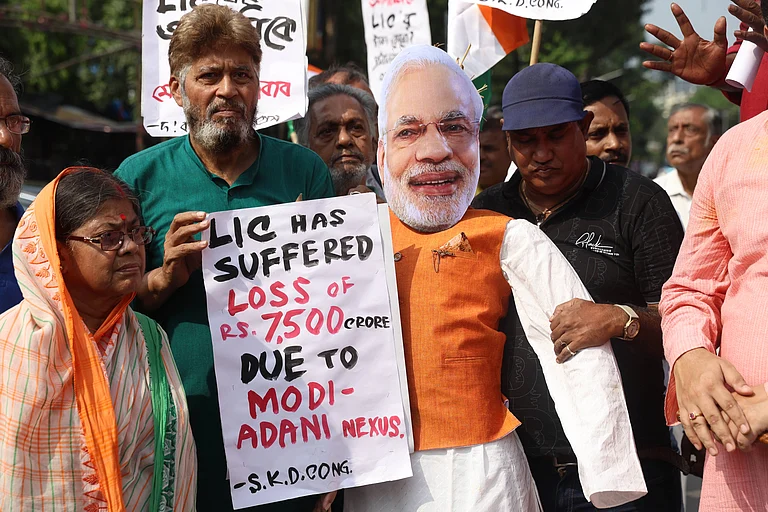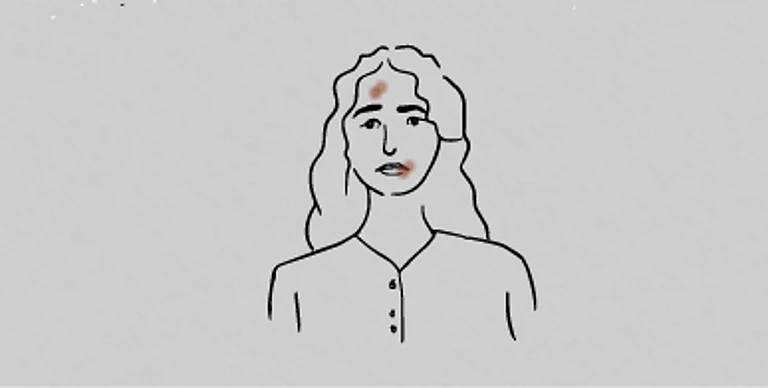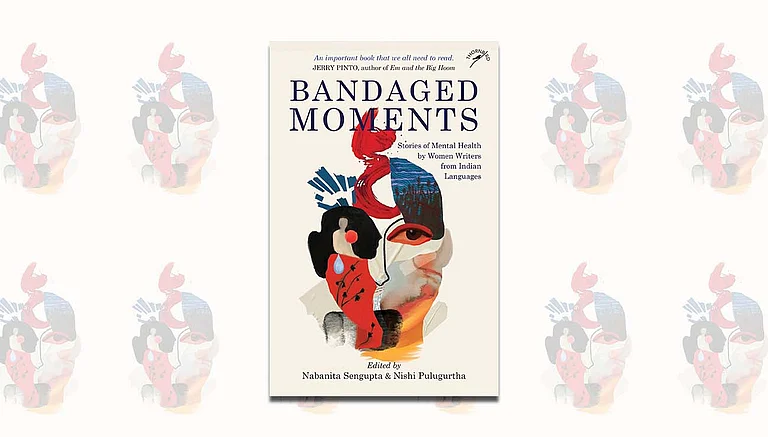
In April 2011 news of two sisters, who had self-isolated and been locked inside that flat for over seven months, made headlines.
India’s urban residents comprised 31 per cent of the country’s population in 2011, according to the census, and are projected to reach 50 per cent by 2050.
In metros like Delhi-NCR, the number of people with mental disorders is 13.5 per cent—nearly double the 6.9 per cent in rural areas.
The stink was overwhelming. It came from inside an apartment in Sector 29 of Noida (New Okhla Industrial Development Authority), the suburban sprawl in Uttar Pradesh’s Gautam Buddha Nagar district that had been conceived as an extension of south-east Delhi’s industrial corridor across the Yamuna. When the neighbours finally called for help and the police broke open the door, they found two women in an emaciated, disoriented state, their lives hanging by a thread.
It was in April 2011 that news of the Behl sisters, who had been locked inside that flat for over seven months, unseen by a city that kept moving around them, made headlines. With the water supply cut off and electricity disconnected, Anuradha and Sonali Behl had barely survived the inhumane conditions of isolation and privation. Anuradha, the elder sister who was found in an unconscious state, died of cardiac arrest the following morning in a hospital, while the younger one, Sonali, was kept under critical care for weeks.
The sisters, who held stable jobs, were surely not destitute. After the loss of their parents and a quiet estrangement from their only brother, however, they withdrew from the world. What began as mourning turned into retreat, and then into quiet disappearance. Neighbours said they had tried knocking, once or twice, before they eventually stopped.
The city’s silence was not abrupt; it had been rather rehearsed and normalised. Far from being an isolated event, the sisters’ tragedy was a haunting indictment of urban India’s fractured soul, where design and disconnection contribute to erasing the vulnerable. Indeed, India’s urban residents, who comprised 31 per cent of the country’s population in 2011, according to the census, and are projected to reach 50 per cent by 2050, are increasingly tethered to digital networks—with 1.2 billion telecom subscriptions in 2023, according to the Telecom Regulatory Authority of India—yet they are achingly alone. Although cities across the world grapple with similar loneliness, India’s rapid urbanisation and digital saturation amplify the paradox of people hyper-connected online but isolated in their real lives.
Infrastructural Isolation of Concrete
Not a glitch in the system, loneliness in urban contexts worldwide is, in fact, part of the very design of modern cities. With their high-rises, closed gates and transient populations, cities create a peculiar condition of proximity without intimacy. The very features meant to enhance convenience and security often end up replacing human contact with efficiency, and familiarity with anonymity. These form the physical backdrop of a deeper erosion of community, kinship and shared responsibility.
Take, for instance, the fact that while 5.1 per cent of urban Indians face common mental disorders, according to the National Mental Health Survey (2015–16), in metros like Delhi-NCR the figure leaps to 13.5 per cent—nearly double the 6.9 per cent in rural areas. A 2014 Journal of Public Health study notes residents of urban India face a 20 per cent higher risk of anxiety than their counterparts in the rural areas of the country—a difference attributed to greater social fragmentation and environmental stressors with urbanisation.
While 5.1 per cent of urban Indians face common mental disorders, in metros, the figure leaps to 13.5 per cent—nearly double the 6.9 per cent in rural areas.
“Our urban environments today are such that in all the metropolitan cities we are going through something called ‘environmental overloads’, which are more like triggers,” says Prachi Sharma, an architect whose research interest is at the intersection of neuroscience applied to architectural design. “These aren’t just irritants. They are stressors. They affect the amygdala, the part of the brain associated with threat detection and stress. Cities are literally rewiring how we experience fear and disconnection.”
A 2011 University of Heidelberg study confirmed that urban settings heighten amygdala activity, increasing risks of anxiety and depression. “We crave natural stimuli, sunlight, greenery and proximity to others, but we are surrounded instead by concrete, traffic and isolation,” says Sharma. “This misalignment manifests as long-term emotional and cognitive strain.”
In Indian cities, loneliness has long been treated as a private sorrow or a matter of individual vulnerability. Yet its impacts increasingly point to something more structural—almost a design flaw in the architecture of urban living. This loneliness, Sharma says, is not just emotional but also neurological. “The chronic stress people are going through in urban areas due to these stressors becomes a precursor to depression, anxiety or cognitive decline,” she adds.
In 1961, Jane Jacobs wrote in The Death and Life of Great American Cities, her critique of the “rationalist” city planning in the United States of the 1950s and ’60s, that “there must be eyes upon the street, eyes belonging to those we might call the natural proprietors of the street. The buildings on a street equipped to handle strangers, and to ensure the safety of both residents and strangers, must be oriented to the street. They cannot turn their backs or blank sides on it and leave it blind.” In India, too, the shift from “eyes on the street” community neighbourhoods to high-rises has often severed communal ties.
Sharma says this shift from India’s traditional neighbourhoods fostering community to vertical urban development amplifies the disconnection. High-rises lack biophilic elements like greenery or natural light. “Biophilic design with plants, open spaces and clean air lowers cortisol and boosts serotonin, fostering a sense of calmness. Our urban environments lack the support system that we need. We want a city that is emotionally connected. We want something that touches our nervous system in a positive manner,” adds Sharma.
A 2022 Frontiers in Psychology study [LN1] has linked high-rise designs to loneliness as they limit social interaction. “There is spatial segregation in vertical cities,” says Sharma. “Research shows interaction drops sharply from the fifth floor upwards. People look minuscule from above. Forget having relationships with them; you are not even seeing people on a human scale.” Traditional Indian urban forms fostered “inward-looking community” through shared courtyards, or front-facing houses where neighbours connected daily. Today’s high-rises, lacking biophilic elements like greenery, offer only token amenities like clubhouses. “We have swapped living in community for simulations of it, leaving residents isolated in secure but sterile towers,” says Sharma.
Left at the Margins
India’s urban mental health crisis disproportionately affects new mothers, working-class women, queer youth and migrant labourers uprooted from their social worlds. A 2019 The Lancet Psychiatry study estimates one in seven Indians faced mental disorders in 2017, with women and marginalised groups bearing higher burdens due to social inequities. Women in urban India, particularly from oppressed-caste or low-income backgrounds, face compounded stressors such as domestic violence and economic dependence. A 2015 study published in the Indian Journal of Psychiatry found 70 per cent of married women aged 15–49 had experienced violence, which is linked to elevated depression and anxiety risks that are intensified in urban settings due to lack of communal support.
Women, especially new mothers, are one of the most vulnerable groups, especially in cities, says Anamika, a trauma-informed therapist. Urban isolation worsens postpartum depression (PPD), which she describes as a crisis that unfolds quietly behind closed doors. A 2017 Bulletin of the World Health Organization meta-analysis reports a 22 per cent PPD prevalence in India, with urban stressors like isolation in high-rises and fragmented social support pushing the figure to 24 per cent among urban women even as it remains 17 per cent for rural women.
“Motherhood in cities is deeply isolating,” Anamika says. “Women say, ‘I miss myself.’ They have had to quit jobs, their identities are in flux, their bodies are unfamiliar, and there is no one around to witness or hold that grief.”
Urban women, particularly postpartum mothers, face heightened risks from nuclear family structures and financial strain. Unlike extended families or community-based child-rearing practices that persist in smaller towns or rural belts, urban life is shaped by distance—not just physical but also emotional and social. Even the medical system rarely intervenes. “There is no routine screening for postpartum mental health in India,” Anamika points out. “Doctors don’t have the time or the training. Women showing clear signs of distress are told to stay positive or try yoga. Therapy isn’t part of the maternal care framework because it’s seen as luxury, not necessity.”
It takes a village to raise a child but, as cities are built for economic productivity rather than to provide community, urban mothers mostly struggle in isolation. So long as there is an abject lack of space and consciously built architecture to facilitate community-building through interactions and gathering, women will continue to face isolation in urban spaces.
This invisibility is deeper for working-class women, who can’t afford a mental breakdown. “For domestic workers or daily wage labourers, there’s no vocabulary for depression,” Anamika says. “They can’t stop going to work. Their bodies carry the weight, but no one asks.” The spaces they inhabit exacerbate their conditions as those are designed without them in mind, and their isolation is not only emotional but also infrastructural and systemic.
The crisis will only deepen for the urban poor as redevelopment takes hold. Ghettoised and poor neighbourhoods are being redeveloped across India from Dharavi in Mumbai to Govindpuri in Delhi. Sharma says tight-knit communities will be uprooted and their living spaces replaced by isolation-inducing architecture. “People who lived in informal settlements had open doors, common courtyards and a rhythm of collective life,” she says. “When they are moved into vertical towers, this entire ecosystem collapses. In some cases, residents rent out their allotted flats and return to the slums—not out of defiance, but to rebuild social life.”
Rethinking Cityscapes
In cities built for economic productivity rather than emotional resilience, isolation perhaps becomes a predictable outcome, not just for the elderly or grieving, but also for postpartum mothers navigating nuclear homes, queer youth pushed to the margins of social acceptance, and migrant workers uprooted from the kinship structures of their villages. Surveilled, sanitised and expanding vertically, most Indian cities remain emotionally unavailable to its residents. One could perhaps afford housing, but a home architecturally attuned to human needs in a city designed for dignified human experience is a distant reality. The structural gap between mental health and spaces of habitation remains overlooked by government, city planners and modern architects.
“Most urban planning ignores how spaces shape mental health, creating environments that feel like traps rather than homes,” says Anamika. “Architects rarely study human behaviour and now they build for efficiency, not emotional well-being, trapping people in stress cycles.”
Designed, budgeted and implemented, care must be seen as intrinsic to infrastructure. Thoughtful design, including shaded walkways, affordable and live-able housing, free mental health counselling, common seating areas, slow streets and women-led urban planning, must be incorporated in policy.
MORE FROM THIS ISSUE
Divya Tiwari is a video journalist based out of Delhi
In its August 21 issue, Every Day I Pray For Love, Outlook collaborated with The Banyan India to take a hard look at the community and care provided to those with mental health disorders in India. From the inmates in mental health facilities across India—Ranchi to Lucknow—to the mental health impact of conflict journalism, to the chronic stress caused by the caste system, our reporters and columnists shed light on and questioned the stigma weighing down the vulnerable communities where mental health disorders are prevalent. This story appeared in print as Forbidding City.

































